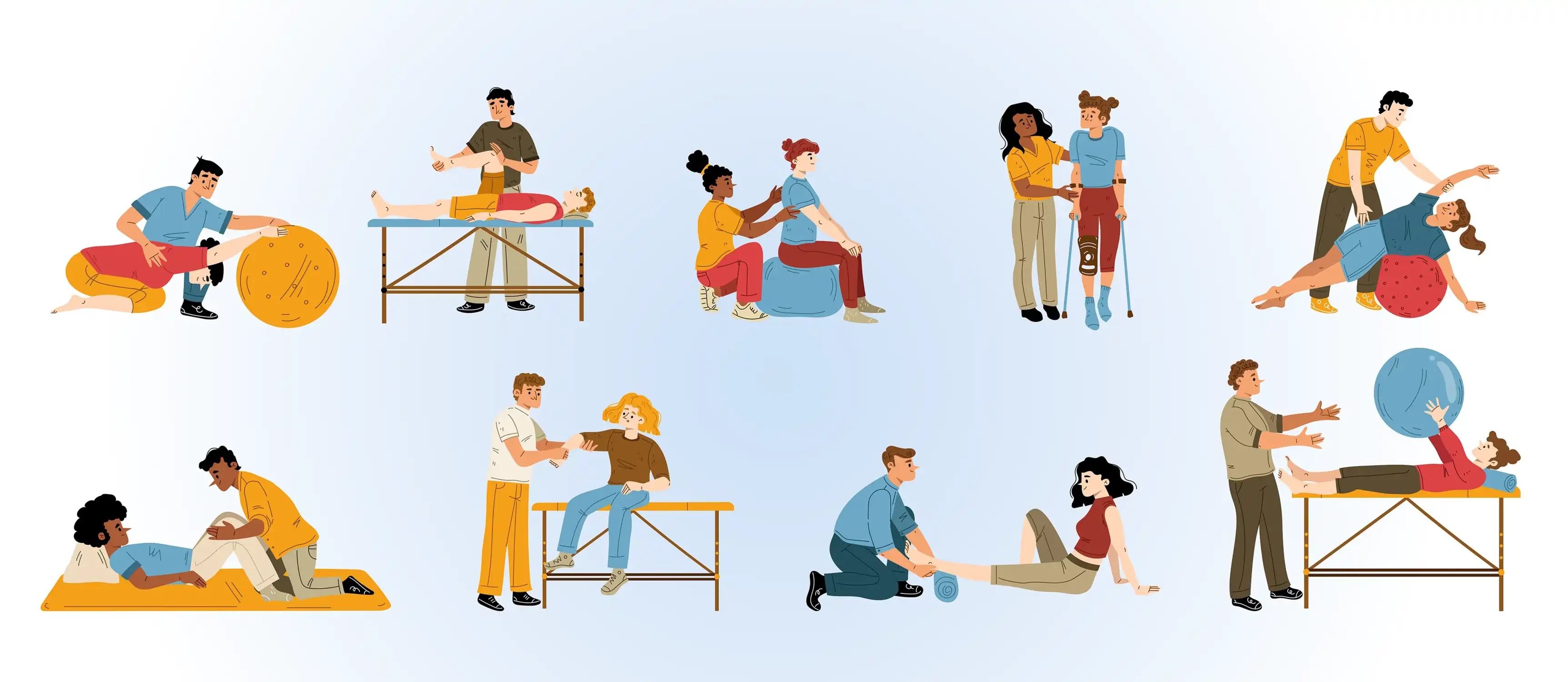Physical Therapy
Physical therapy is the most important thing during limb lengthening phase. And, you need to take physical therapy in almost every day during limb lengthening phase.
If you have done some research about limb-lengthening surgeries, you probably know that the bones are able to lengthen by distracting them, which is called osteotomy (surgical breaking). As the bones get longer and longer, all the surrounding soft tissues; which are blood vessels, nerves, muscles, and tendons are being stretched. These tissues can tolerate this tension until some point but because most patients want at least 5-7 of height lengthening in this process, this causes tension and results in pain, and limits the mobility of the feet and legs.

It is well recognized that we may educate our muscles to become more flexible, stronger, and more pronounced through physical activity. Leg lengthening is likewise covered by this. We can train our legs to be more flexible and adjust to the longer bones with the use of stretching exercises and physical therapy.

However, our patients perform some exercises independently, it has been shown that this is insufficient for a good limb-lengthening operation without outside assistance. Without expert knowledge, patients may not be pushing their muscles to the limit even if they are dedicated and consistent with their own training regimen. A skilled and knowledgeable physiotherapist will push the patient to the maximum in order to assist them go out of their comfort zones and broaden their range of motion.

Our team established with professional physical therapists who are skilled on limb lengthening procedure. Your physical therapy will be provided by our professional physical therapists. Our skilled limb lengthening physical therapists will provide maximum strength and flexibility and prevent issues.
Hydro Therapy
Hydrotherapy is a safe and efficient treatment during the post-limb lengthening phase because the buoyant force of water greatly lessens the strain on joints and muscles. Complications from limb lengthening surgery can include edema, gait abnormalities, discomfort, loss of balance, restricted range of motion, and strain in soft tissues (muscles, nerves, fascia, tendons). By using the buoyant force of water to alleviate the weight on internal nails, hydrotherapy can prevent and lessen these issues. This enables patients to carry out exercises and motions that could be challenging or impossible on land.

Our skilled physiotherapists lead our extensive hydrotherapy programs. To provide convenience and continuity of treatment, these sessions are held at your lodging. Patients usually attend hydrotherapy treatments two to three times per week, taking advantage of the healing properties of water to speed up healing and enhance results. This expert approach demonstrates our dedication to patient comfort, safety, and successful recovery.

X Rays
The full range of limb lengthening services includes X-rays. In order to evaluate bone length, anatomical angles, and detect any abnormalities, orthorontgenogram X-rays are obtained both prior to and following the lengthening procedure. Regular X-rays are essential for tracking your development and making sure the operation is going well during the lengthening phase.
The surgeon can assess bone alignment, the state of the new bone tissue (callus), and other important aspects with the use of these X-rays. The surgeon can identify and treat possible issues early thanks to this careful observation. You won't have to travel because X-rays will be taken at your lodging twice a month to guarantee your comfort and convenience. Throughout your limb lengthening journey, this patient-centered and professional approach guarantees ongoing and efficient monitoring.
Regular Check Up
To ensure successful results, the patient must be closely monitored during the lengthening period. The quality of the lengthening process, the growth of callus (new bone) tissue, the state of the pin and wire sites, and the patient's general physical condition are all aspects that require routine evaluation. Furthermore, it's critical to recognize and resolve any potential issues as soon as possible.

Every week, our committed surgeon performs assessments to carefully monitor each patient's development. This include analyzing x-rays to determine bone alignment and growth, looking for infection or other problems at the pin and wire sites, and assessing the patient's physical state to make sure they are developing as anticipated. As part of our dedication to offering complete treatment, the surgeon visits our center on a regular basis. This allows us to swiftly address any issues and optimize the lengthening process for our patients.

Surgery to Remove Fixators
A major turning point in your limb lengthening experience is reaching your lengthening goal and getting your fixator removed. A thorough assessment is carried out following the achievement of the desired length prior to the fixator removal procedure. To evaluate bone length, osteotomy length, total leg length, and the condition of the callus (new bone tissue), an X-ray of the complete leg is taken. If a difference in leg length is found, more time could be needed to equalize the legs.

The date of the fixator removal procedure is set after the amount of callus tissue is judged adequate. Under general anesthesia, the process usually takes two hours to complete. Patients typically remain in the hospital for observation for one day after surgery. Our surgeon and his staff will perform a comprehensive physical examination and gait analysis during this time.

Before the patient is released from the hospital, a final X-ray is taken. The greatest results and a seamless transition to the following stage of recuperation are ensured by this methodical approach, which makes sure the removal procedure is safe, efficient, and customized to each patient's unique needs.



